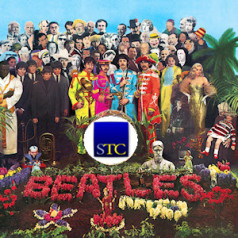Today, the first full day of the annual STC Summit, marks the 64th year that STC (the Society for Technical Communication) has been in business.

Hmm…What if I Photoshop all of the STC staff and directors’ faces into this image?
Which brings to mind a Beatles lyric:
Will you still need me, will you still feed me,
When I’m sixty-four?
The “Will you still need me?” question is especially relevant as STC — a 20th century organization — copes with flat membership numbers and attempts to navigate the changing professional landscape of the 21st.
As I’ve said before, I think the technical communication profession — and the people in it — still do need STC. But the reasons are changing, and have been changing for some time. As a result it’s not a sure bet that STC will remain relevant over the next few years.
STC remains relevant today because it…Still provides a solid platform for networking and information exchange. These were the major roles of a professional society in the 20th century. Today, even though it’s far from being the only game in town, STC still succeeds at these roles through its chapters and SIGs (special interest groups).
Curates a body of knowledge — a set of standards and best practices for the profession — and makes it available to both practitioners and educators.
Connects practitioners with educators through the Summit conference, through the Technical Communication journal, and through its various networking platforms. While the practitioner’s world is very different from the educator’s, STC helps bridge the gap by sharing information and by making it possible to engage in dialog. The profession needs as much of that dialog as it can get.
STC can stay relevant if it…Reaches across to professionals in other fields who could benefit from associating with STC. Ever since the organization was known as the Society of Technical Writers and Editors in the 1960s, it’s been challenged to define the boundaries of the technical communication profession. Besides writers and editors, it took in graphic artists, training developers, and educators.
 Today the field of “content” is broader — and harder to define — than ever. STC can benefit by cross-pollinating with organizations that support marketers, UX designers, publishers, project managers, and others — and the members of those groups can benefit from affiliating with STC. The trick will be broadening STC’s appeal while staying focused on the things that make it unique.
Today the field of “content” is broader — and harder to define — than ever. STC can benefit by cross-pollinating with organizations that support marketers, UX designers, publishers, project managers, and others — and the members of those groups can benefit from affiliating with STC. The trick will be broadening STC’s appeal while staying focused on the things that make it unique.
Makes sure, once the newcomers arrive, that they feel welcome and find their place in the organization. Creating volunteer opportunities and nurturing volunteerism are two ways of doing that.
Keeps finding new ways to attract, train, and energize volunteers. STC’s volunteers have long been the backbone of the organization. My experience as an STC volunteer has made much better at my job and much more attractive to my employers.
Builds its certification program into something that’s valued by practitioners and their employers. In the absence of a legal requirement for practitioners to be licensed, certification programs like CPTC usually take a long time to gain momentum. STC needs to balance patience with the need for steady growth.
Continues to operate as a worldwide society. In Europe, a lot of the energy that used to center around STC is now found under the tekom banner. In both Europe and North America, Write the Docs stages popular regional and local events. I hope that STC will find a way to operate alongside organizations like these, in harmony with them, rather than competing directly with them or ceding the stage to them.
Whatever your connection to STC — or if you have no connection at all — I’d like to hear what you think. Please leave your thoughts in the comments.
Advertisements Share this:- More






